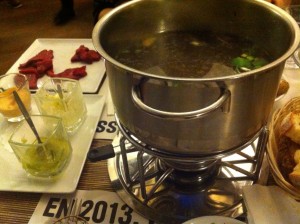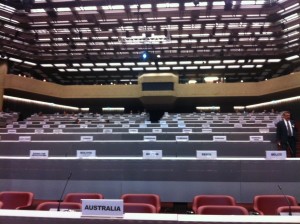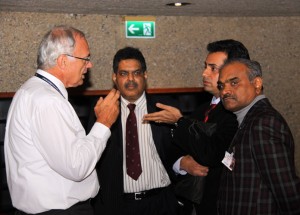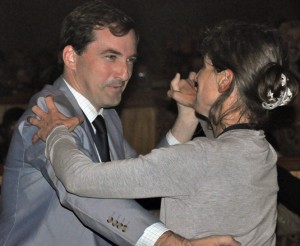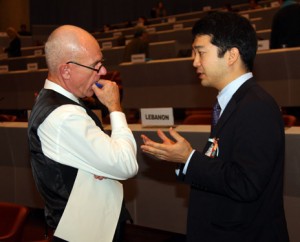By: Amanda Giang
- I can single-handedly eat a litre of cheese if it is in fondue form.
- Negotiators are acting on behalf of their countries (or regional economic groups), but their success has as much to do with their own personalities as it does with their country’s position. It was really fascinating (not to mention impressive) to see how different individuals used facts, rhetoric, empathy, or in some cases, rapier wit, to broker consensus. To use a phrase coined by Rebecca Saari, I may have developed some “diplomacy crushes” over the course of the week.
- Is an environmental treaty ever just an environmental treaty? Issues of environment, health, and trade are so incredibly intertwined. As delegates tried to disentangle these different threads, and to figure out what the scope of an environmental treaty should be, I began to question whether or not our current international governance systems are really able to address the holistic global problems—be they global poverty, hazardous chemicals, biodiversity loss, or climate change—that we’re facing. I think there’s a role for academia to play here—as researchers, we need to better understand and communicate the integrated nature of these problems, and work from an interdisciplinary perspective. Scientists we met at INC5 like Dr. Celia Chen and Dr. David Evers serve as great models for this kind of work.
- Should the focus of an international environmental treaty be prevention and mitigation, or should it also address affected communities, and adaptation to existing problems? This is a question that has come up in the debate over climate change, and it also reared its head at the mercury negotiations, particularly in the discussion on a dedicated section on the health aspects of the mercury problem. I thought the final treaty text for this section, which encouraged promotion of activities to identify, treat, and care for affected communities, was a precedent setting first step towards answering this question.
- Thanks to Swiss hospitality (which included a fantastic Heidi-themed “Swiss Break”) and some dedicated sleuthing on the part of Phillip Wolfe, I know now that there are over ten film and television productions of Heidi, including an anime series, and a feature length adaptation with dogs playing all the major roles.
Thanks for reading and following us! If I can sneak in a sixth thing I learned, it’s that sharing this experience, and connecting with others involved in science outreach, has been a fantastic one in its own right.



